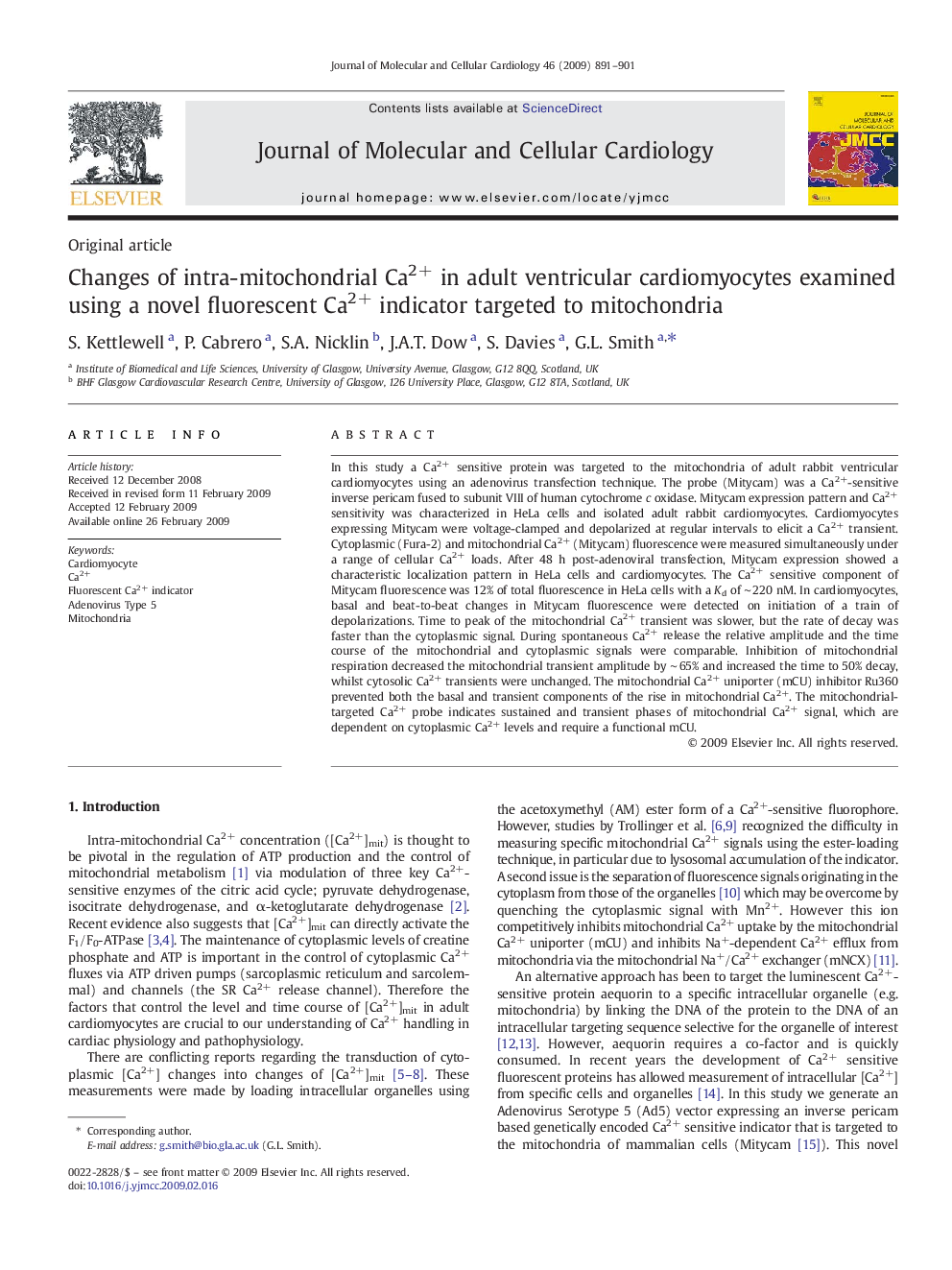| Article ID | Journal | Published Year | Pages | File Type |
|---|---|---|---|---|
| 2191117 | Journal of Molecular and Cellular Cardiology | 2009 | 11 Pages |
In this study a Ca2+ sensitive protein was targeted to the mitochondria of adult rabbit ventricular cardiomyocytes using an adenovirus transfection technique. The probe (Mitycam) was a Ca2+-sensitive inverse pericam fused to subunit VIII of human cytochrome c oxidase. Mitycam expression pattern and Ca2+ sensitivity was characterized in HeLa cells and isolated adult rabbit cardiomyocytes. Cardiomyocytes expressing Mitycam were voltage-clamped and depolarized at regular intervals to elicit a Ca2+ transient. Cytoplasmic (Fura-2) and mitochondrial Ca2+ (Mitycam) fluorescence were measured simultaneously under a range of cellular Ca2+ loads. After 48 h post-adenoviral transfection, Mitycam expression showed a characteristic localization pattern in HeLa cells and cardiomyocytes. The Ca2+ sensitive component of Mitycam fluorescence was 12% of total fluorescence in HeLa cells with a Kd of ∼ 220 nM. In cardiomyocytes, basal and beat-to-beat changes in Mitycam fluorescence were detected on initiation of a train of depolarizations. Time to peak of the mitochondrial Ca2+ transient was slower, but the rate of decay was faster than the cytoplasmic signal. During spontaneous Ca2+ release the relative amplitude and the time course of the mitochondrial and cytoplasmic signals were comparable. Inhibition of mitochondrial respiration decreased the mitochondrial transient amplitude by ∼ 65% and increased the time to 50% decay, whilst cytosolic Ca2+ transients were unchanged. The mitochondrial Ca2+ uniporter (mCU) inhibitor Ru360 prevented both the basal and transient components of the rise in mitochondrial Ca2+. The mitochondrial-targeted Ca2+ probe indicates sustained and transient phases of mitochondrial Ca2+ signal, which are dependent on cytoplasmic Ca2+ levels and require a functional mCU.
